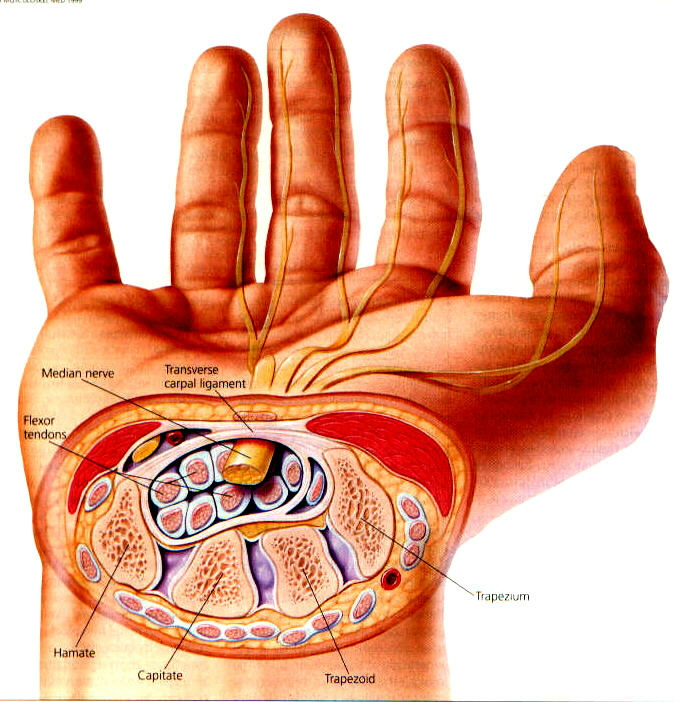Carpal Tunnel Syndrome
What is Carpal Tunnel syndrome (CTS)?
What causes CTS?
What are the early warning signs of CTS?
What are dangers of untreated CTS?
How is CTS diagnosed?
CTS is diagnosed by a thorough history and physical examination. CTS is further supported and documented by Electrodiagnostic tests (EMG/NCS). EMG/NCS also allow the physician to determine the duration, severity and rule out other similar disorders. Furthermore, EMG/NCS studies can be used to evaluate the effectiveness of treatment and the progression of the disease. X-rays may be useful to evaluate other conditions in the wrist and hand.
What is the treatment of CTS?
7 ways to prevent CTS at work and home
- Keep wrists straight when working at a keyboard. Maintain wrists in neutral position (90º elbow flexion) and avoid excessive bending and movement.
- Keep your wrist straight and use your whole hand to grasp objects.
- Minimize repetitive activities; alternate tasks, which require different movements and postures.
- Take special care with forceful actions, such as pushing open doors, lifting heavy objects, and opening jars.
- Give your hands brief and frequent rests to allow them to recover from repetitive exertions.
- Strengthen your hands and wrists throughout the day. (Please refer to exercises below)
- Consult a doctor if you have persistent possible symptoms of CTS. Early treatment is vital.
Home Exercise Program:
Hand Massage: Gently massage the palm and back of each hand, using a circular motion. This especially helps the muscle at the base of the thumb.
Clench and Fan: With the hands in neutral position in front of you, first make a fist and hold for 5 seconds. Then spread out the fingers as far apart as you can. Hold for 5 seconds. Repeat up to 5 times for each hand.
Thumb Stretch: Gently grasp the thumb of one hand and pull out and down until you feel the stretch. Hold for 5-20 seconds. Repeat 3-5 ties with each thumb.
Wrist Stretch: Grasp the fingers of one hand and bend back the wrist. Hold for 5 seconds. Then switch hands.
Wrist Circles: With your hands in front of you and your elbows at a comfortable angle, gently rotate your wrists. Repeat 5 times in each direction.
Arm Circles: In the standing position, extend arms straight out at sides. Move arms in a circular motion, with the elbows locked. Repeat 5-10 times in each direction.
Shoulder Rolls: In a seated or standing position, let arms relax at your sides. Then raise shoulders and rotate them up and back in a circular motion. Repeat up to 5 times. Then change the direction.
Neck Stretch: Sit with the shoulders down and relaxed. Gently let head fall forward as far as you can. Hold for 5-10 seconds. Gently raise head and repeat up to 5 times.
Please note: this brochure is to assist the patient in understanding. It does not replace nor take the place of a good clinical evaluation by a medical doctor. If any of the exercises result in pain or increased symptoms please avoid those activites.
Contact Us
13710 Olive Boulevard (Primary Office)
Chesterfield, MO 63017
Telephone: 314-469-PAIN (7246)
Fax: 314-469-7251
Exchange: 314-441-6965 (for after-hour Emergencies Only)
Hours:
Monday thru Friday
8:30 AM – 4:30 PM


